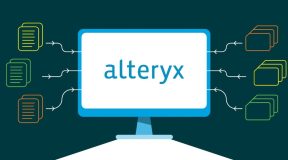In today’s swiftly changing business environment, a cookie-cutter approach to professional development regularly underdelivers. Customized in-house training workshops furnish personnel with precisely what is necessary to confront their specific hurdles and ambitions head on. By crafting erudition suited to an enterprise’s distinct circumstances, these intensive sessions not only enhance productivity in the short term but also empower staff to grow into their best selves, propelling sustained triumphs for the whole organization for years to come.
Why Customized In-House Training Empowers Your Team Through Relevant Learning Experiences
The Science Behind Tailoring Education to Each Person’s Unique Role
In today’s business landscape, where specialized expertise is continuously evolving, tailoring training to employees’ specific roles has become a standout strategy. Customized in-house training workshops allow lessons to be shaped around the unique needs of each participant. Grounded in adult learning theory, which emphasizes relevance, this approach reflects real work situations and challenges, driving more effective learning. Research confirms that making content directly related to participants’ jobs not only enhances engagement but also significantly improves knowledge retention and application. Moreover, cognitive load theory suggests that presenting relevant, coherent information reduces mental overload, increasing focus and participation.
For example, one organization found that workshops focused exclusively on their software streamlined onboarding, while another tailored technical training to each department, maximizing efficiency. Overall, customized learning creates more engaged, better-prepared teams that can transfer classroom lessons directly into daily work.
Personalization in training goes beyond customizing content; it creates meaningful experiences for participants. Studies show personalized learning pathways increase engagement, which is key to retaining knowledge. Rather than following generic curricula, employees participate in interactive sessions that respect their strengths, learning styles, and goals. By giving employees a voice in their development, organizations tap into powerful intrinsic motivation—critical for adult learning. Assessments help identify gaps that can be addressed precisely in workshops. Evidence shows that this approach boosts the application of new skills on the job and encourages a culture of continuous learning. The result is not only improved individual performance but also higher productivity across teams.
Case Studies: Success Stories from Customized Workshops
A multitude of organizations have experienced transformations through personalized workshops hosted internally. For example, a leading technology corporation identified a striking inadequacy in their software designers’ agile management techniques. Through the development of a customized workshop that interwove fundamental theories with practical uses via roleplaying and simulations, the company saw a 40% boost in project finalization rates within half a year of instruction. Elsewhere, a worldwide monetary services provider faced difficulties with client service and conflict resolution. Subsequent to a tailored workshop concentrating on genuine case studies utilizing their customer communications, the firm recorded a 30% improvement in client satisfaction ratings. These tales of success emphasize not merely the substance yet in addition the conveyance strategy of modified preparation workshops. They show that associations willing to put resources into custom arrangements see quantifiable advancement and a more prominent return on their preparation ventures.
Crafting the Perfect Training Program: Learning an Employees’ Unique Strengths and Limitations
To appropriately design any coaching program, comprehending the particular qualities and deficiencies of your team is pivotal. This rudimentary comprehension can be gleaned through evaluations, surveys, and one-on-one discussions. Employing instruments like SWOT examination (Strengths, Shortcomings, Openings, Dangers) can help in identifying skill vacuums while additionally leveraging present team competencies. Once these components are recognized, coaching can be more precisely aligned to address particular regions for advancement while simultaneously bolstering solid abilities. A well-balanced approach can rouse team cooperation and make a encouraging environment for learning. Moreover, it is fundamental to consider the diversity in learning styles—visual, audible, and kinesthetic—so that each team part can engage with the material in a way that resonates with them. Evaluating these factors empowers associations to assemble a strong program that speaks straightforwardly to their preparation needs.
Synchronizing Preparing Objectives with Company Goals
The achievement of any preparing program is essentially impacted by its synchronization with more extensive authoritative objectives. To manufacture a preparation program that genuinely upholds the association’s mission, one must begin by surveying the company’s strategic targets. Synchronizing preparation with business destinations not just legitimizes the venture yet in addition guarantees that the abilities created will contribute to general execution estimates. For instance, if an organization’s objective is to expand piece of the overall industry, preparing could center around improving deals systems, upgrading client relationship administration, or creating item information. Furthermore, involving different divisions in the arranging stage guarantees stakeholder contribution and more extensive point of view, which can anticipate detached programs that don’t mirror bona fide needs on the ground. This synchronization supports a feeling of reason, inspiring representatives to see their preparation as a pathway to individual and authoritative achievement.
Designing Immersive Training Experiences that Resonate Deeply
Interactive training content is pivotal for fostering engaging learning. Learning effectiveness is amplified significantly when participants can actively explore concepts through thoughtful discussions, illustrative case studies, simulated role-plays, and hands-on practice. This level of involvement not only cultivates enjoyment but helps cement ideas in a manner that passive training cannot attain. Incorporating cutting-edge technologies, like virtual reality environments, can also generate all-encompassing learning worlds that mimic authentic situations, supplying learners with invaluable rehearsal. Additionally, leveraging narrative techniques within instruction can capture focus and enhance memory retention. Understanding your audience’s preferences is paramount for crafting resonating content, whether through elements of play, simulations, or collaborative undertakings—ensuring training leaves an impression and impacts performance.
Innovative Approaches to Augment In-House Training Impact
The Role of Playfulness in Knowledge Retention
Gamified learning—the application of game mechanics outside of games—has emerged as a groundbreaking technique for training implementation. By integrating quests, point systems, badges, and competitiveness, organizations cultivate an engaging framework that inspires participants to immerse themselves deeply in the learning experience. Research indicates gamified training settings can heighten information retention by up to 50%. It fosters a problem-solving mindset among employees, pushing them to actively engage as they navigate challenges. For example, incorporating scenarios where employees must make decisions amid obstacles can mimic authentic work situations and cultivate critical thinking. Beyond involvement, gamification provides instant feedback, helping learners pinpoint gaps in understanding in real-time, which they can address before advancing. This not only enhances learning but also helps sustain motivation throughout training.
Leveraging Technology for a Seamless Training Experience
In today’s digital age, harnessing technology can greatly augment the potency of internal instruction sessions. Online education modules, mobile applications for convenient access to learning materials, and virtual teamwork platforms facilitate an expertise building experience that accommodates varying timetables and pacing preferences. Technology permits institutions to provide supplemental resources and references, transforming the training from an isolated occurrence into an ongoing journey of self-improvement. Learning Management Systems (LMS) play a pivotal role, offering a centralized hub for monitoring advancement, insights, and feedback. Moreover, the application of data examination can help identify patterns in studying behaviors, allowing for continuous refinements to coaching routines. Consequently, tech-enhanced instruction permits institutions to craft adaptable pathways of learning that reply to employee needs and choices, driving higher participation and achievement rates.
Bringing Theory to Life through Experiential Learning
Experiential learning underscores the importance of ‘learning by doing.’ This educational philosophy contrasts with traditional methods by placing participants in authentic scenarios that compel them to employ theoretical notions. Workshops designed around this principle can incorporate simulations, group undertakings, or fieldwork that demonstrate practical applications of the material covered. Furthermore, feedback loops are integral to experiential learning, allowing learners to reflect on their experiences, discuss outcomes, and adjust their approaches. Not only does this deepen comprehension, but it also fosters collaboration and encourages the development of soft skills such as communication, teamwork, and problem-solving. Organizations that embed experiential learning into their training initiatives often witness substantial improvements in employee confidence and capability, as individuals transition from theoretical understanding to practical expertise adeptly.
Measuring Success: How to Evaluate the Impact of Your Training Workshops
Setting Clear Metrics for Evaluating Training Effectiveness
The familiar saying “what gets assessed gets managed” rings uniquely valid in regards to coaching initiatives inside an organization. Establishing clear metrics for evaluating the potency of in-house instruction is essential for pinpointing return on investment and guiding long term improvements. Beyond mere completion rates, quantifiers including knowledge examinations, application evaluations in real work environments, and performance benchmarks can offer invaluable insights. Moreover, companies can measure participation levels during coaching, alteration in job performance post-instruction, and shifts in employee satisfaction. This quantitative information, paired with qualitative feedback received from participant questionnaires and discussions, produces a holistic view of the training’s impact. Furthermore, establishing long-term tracking mechanisms to observe skill application over time can substantiate the prolonged benefits of the coaching investments.
Gathering Feedback: Ensuring Continual Improvement
Feedback is a cornerstone of ongoing advancement in any coaching program. Implementing organized feedback routes allows participants to express their thoughts on coaching substance, conveyance, and applicability. Anonymous surveys, focus groups, and post-instruction interviews can furnish deeper understandings into regions of strength and opportunities for enhancement. Importantly, gathering feedback is not a one-time activity; it should be a constant cycle of evaluation that informs each coaching iteration. Moreover, encouraging an open culture where employees feel safe to express their opinion about the coaching fosters trust and responsibility. By actively using feedback to adjust and evolve your coaching programs, organizations not only enhance the quality of their coaching but also demonstrate a commitment to employee development.
Long-Term Changes: Tracking Growth and Development Over Time
The true measure of a training program’s success lies in tracking its long-term effects on employee performance and organizational growth over the years. Observing progress throughout time allows organizations to see any lasting changes in behavior, boosts in productivity, and overall contributions to achieving company objectives. Longitudinal studies, assessments, and regular check-ups can help maintain a pulse on the rise of individual performance. Organizations can also support this climbing by establishing mentorship or coaching programs post-training, providing ongoing resources for honing skills, and ensuring opportunities exist for employees to practice and refine their abilities. This strategic approach not solely guarantees the sustainability of learning outcomes but cultivates a culture of perpetual learning and continuous professional flourishing, vital for navigating the challenges of today’s ever-evolving business landscape that is constantly redefining itself.






